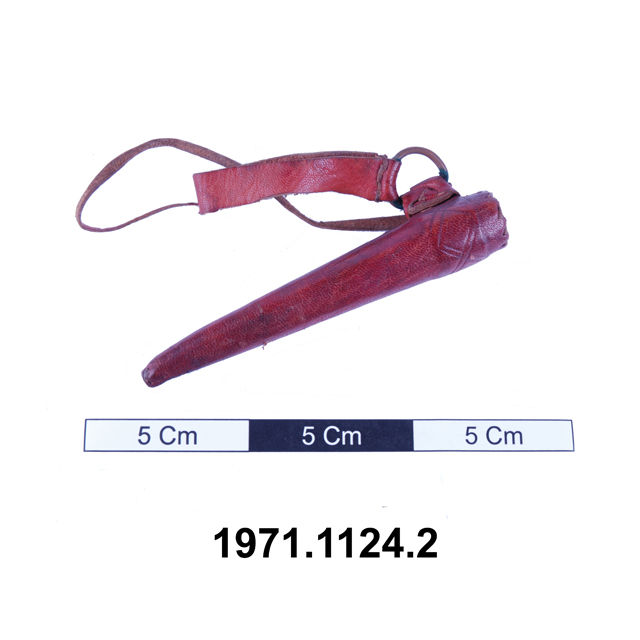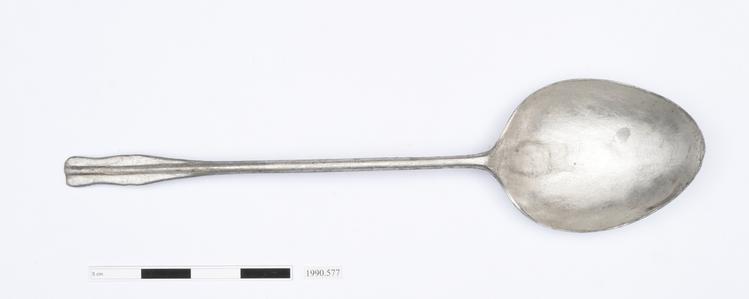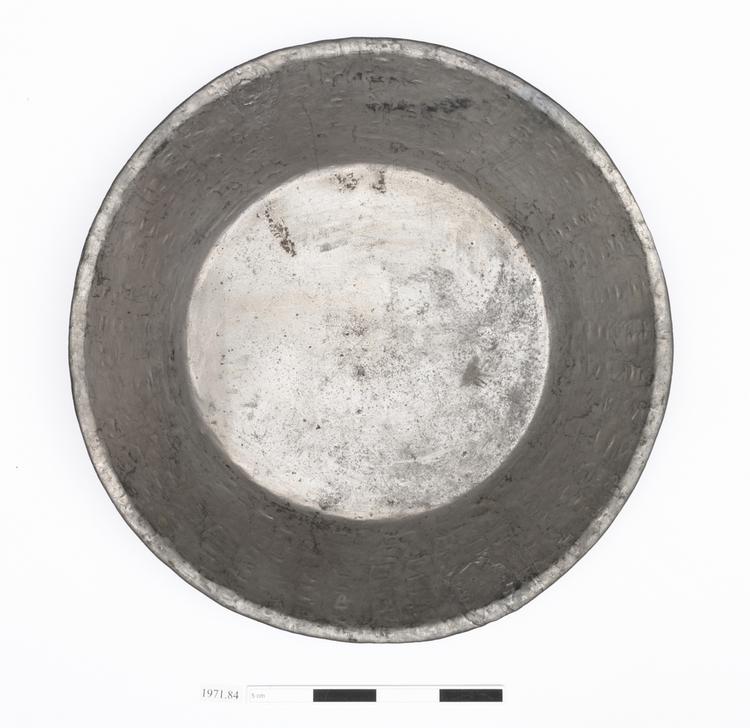
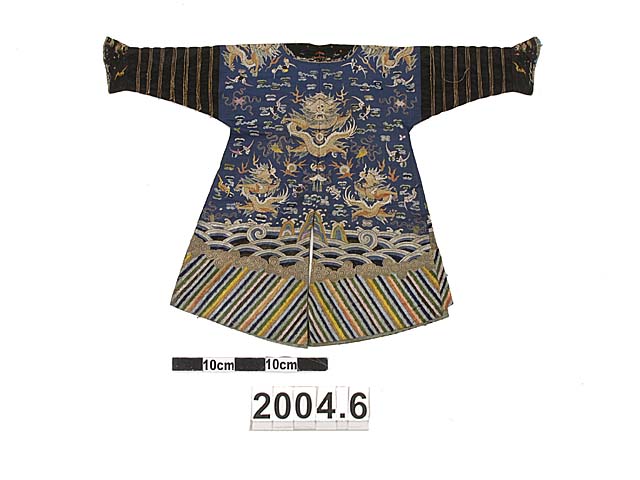
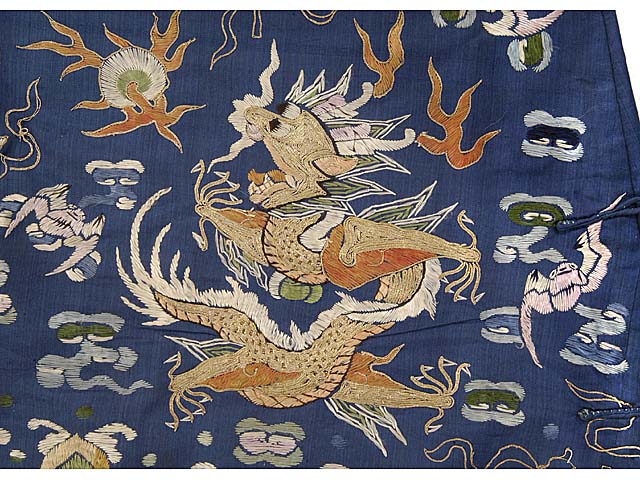
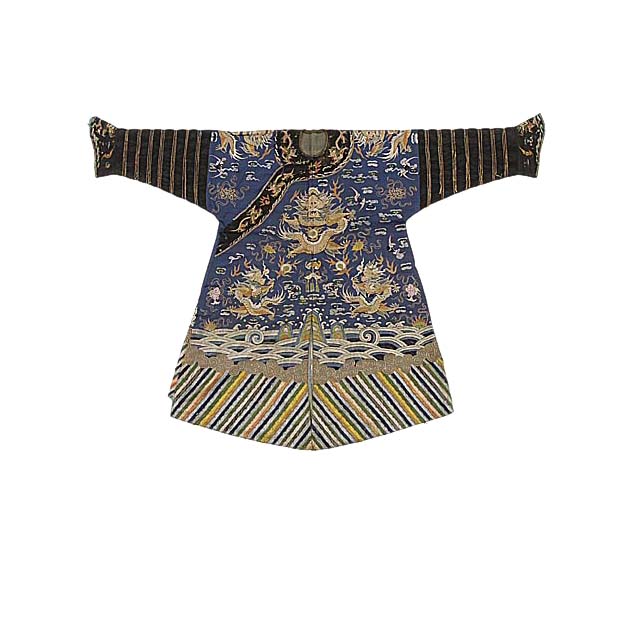
Man's robe, jifu, probably for a civil servant of the third or fourth rank. Blue body, black neckline and cuffs, and a wide green hem decorated with multicoloured embroidery, of moderate quality. The decoration on the blue textile consists of three five-clawed dragons on the front, two on the shoulders and three on the back, each with their accompanying pearl. They are surrounded by bats, fish, canopies and lotus flowers worked in pink, green, brown, yellow, and cream, as well as gold-coloured metal-wrapped thread. The wide hem is decorated with a cloud and wave pattern. Three rocks or mountains rise from the centre of the waves. At either side on the front are semicircular shapes surrounded by possible flames. On the back these are replaced by scrolls. The black neckline is decorated with several pairs of facing dragons either side of a pearl, above a wave pattern. It is edged with gold-coloured ribbon. The neckline and opening on the side are fastened with five blue silk knots and loops. The black cuffs consist of two sections. The upper, sleeve-shaped section is decorated with sets of three metal-wrapped thread stripes. The curved section is decorated with a dragon, similar to those on the neckline, framed by bats and clouds. This section is also edged with the gold-coloured ribbon. The robe is split at the centre of front and back, and lined partially with turquoise silk or green cotton. Wear around the neck, hem, cuffs and buttonhole fastenings suggest that it was worn regularly. The front is in good condition and the garment was probably worn under a covering coat.
Came from Mrs Grants' great grandparents who were in China at the end of the 19th century. Her mother's maiden name was Susan Johnstone. Her grandmother was born in Peking in 1906. Mrs Grant's great-grandfather, Mr Charles William Campbell, C.M.G. , was born in 1861 and spent many years in China - his obituary is in the historical files.



